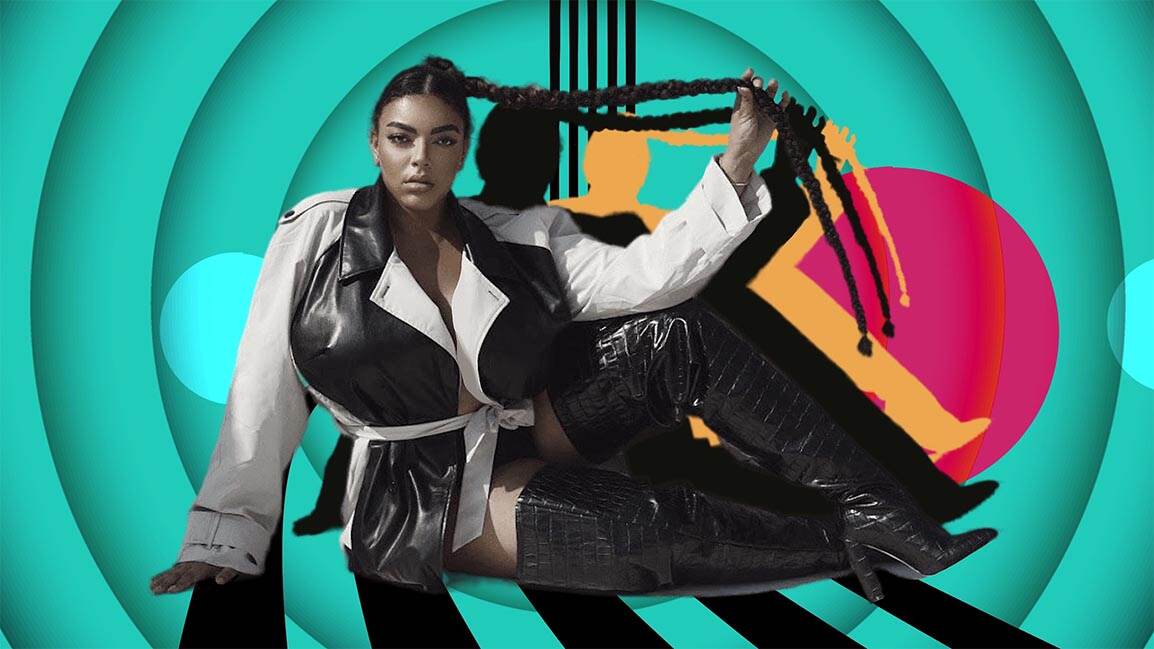- | 9:00 am
The Middle East still has a positive body outlook problem. Can these designers change that?
In a region where women are naturally curvier and known for their high fashion spending, why do they feel left out?

Sustainability, inclusivity, and diversity are some buzzwords which fashion brands throw around. More than often, however, these tags are merely used as marketing tools, especially when it comes to body positivity.
One of the strongest voices on this topic in the Middle East is Dubai-based fashion designer Dima Ayad, who says, “You cannot punish people for their size.”
Considering most studies reveal the average size of women to be UK 14, the fact that fashion often ignores most women makes no sense—all the more in the Middle East—where women tend to be naturally curvy. This was why Ayad, a communications specialist who started her eponymous fashion label over a decade ago, says, “The average size of a woman in the region is 14-16. If you check any website for something that suits a larger woman, the L and XL are sold first.”
WHEN IS A CLEAR MARKET BEING IGNORED?
The Middle East is a region known for its high spending.
Data from research by Dubai-based Chalhoub Group reveals that Arab women are happy to spend $2,400 a month on beauty, clothes, and gifts. No limitations to expenditures, but many available clothing sizes must result in most women feeling left out.
Ayad says, “It was personal. It started when I realized I couldn’t find anything that fit me, so I asked myself repeatedly—how is nobody doing this?”
Today, Dima Ayad’s label retails on the region’s leading online fashion platform, Ounass, and on several others.
Ayad takes her role as an advocate for size inclusivity very seriously and worked on the launch of 11 Honoré, a US-based size-inclusive luxury fashion retailer, which began delivering to the region in 2018. The brand is already part of their high fashion edit alongside international labels like Carolina Herrera and Ganni.
She counts 11 Honoré founder Patrick Henning as one of her mentors since no retailer has taken up the cause of body positivity in all seriousness in the region. “I would like to scream this out loud. The region doesn’t give this subject any importance. When was the last time you saw a collection on a curvy model?”
THE FIRST ARAB CURVY ROLE MODEL
America’s favorite curvy model, Ashley Graham, made her cover debut in 2016, first in Sports Illustrated, wearing a swimsuit, and then a few months later in British Vogue. Now in her mid-30s, she has become a role model for younger girls, and curvy models are featured more often on Western covers and campaigns.
The Middle East is still playing catch up, and 23-year-old Ameni Esseibi is considered the first Arab curvy model who underwent a struggle to be taken seriously. “Breaking any stereotype here is tough. Though women here are naturally curvy, we just chase beauty standards set by the West,” says Esseibi.
A chance meeting with Vogue Arabia’s Editor-in-Chief Manuel Arnaut brought Esseibi her first break. Only after that did other magazines take note, followed by the fashion brands.
Now a well-known face in the industry, she recently shot a regional campaign for Jean Paul Gaultier. Esseibi, who refuses to be tagged as plus-size, as the term itself promotes a negative body image, says, “You do not call thinner models a minus, so why does this industry call us plus size? If you want to call us anything, it should be curvy.”
She insists that it is not until the region stops adopting a tokenistic attitude that things will change.
THE CURVY GIRL’S DRESS ISSUE
Interestingly, seasoned journalist Jessica Michault, who moved to the Middle East a year ago to become the deputy editor of Harper’s Bazaar Arabia, says, “I have been in the UAE less than a year, but I can speak to my personal experience that in general, sizing in the region is much more inclusive than in, say, France. I can find pieces to fit me here that I won’t be able to find in Europe.” She feels that being curvy is an acceptable part of the culture.
Michault sports local labels like Dima Ayad, L’Couture and Azzalia. She also turns to Italian Max Mara’s size-inclusive label, Marina Rinaldi. However, she feels there is still a gap in the market.
“The options still remain rather limited. Things are better in the arena of sportswear and, to a certain extent, event dressing. But it’s the everyday elegant or stylish clothing options that are more difficult for curvy women to find.”
Both Ayad and Esseib agree. “If you are looking for something fun, something fashionable to wear on a daily basis—there are no options,” says Esseib. The problem is that most designers in this region follow the age-old norm of using small as their sample size and then simply scaling the piece up—meaning that fashion is only tailored to look good on slim women.
Brands in Europe and America are waking up to the fact that this practice needs to change, but here, most contemporary-wear designers still go by the traditional approach to pattern making. As Ayad explains, “Think of the bust, the waist, the length of a dress and where it should sit, accentuating the female figure.”
It seems ironic that in a region where women are naturally curvier and known for their high fashion spending, these women should feel left out.








































